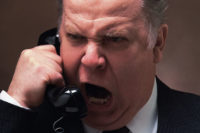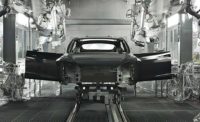This kind of noise can easily break one’s concentration and focus. And in that split-second of unawareness, you might swerve if driving a forklift, slip while climbing, lose your balance, lose you line of sight, or put your hands and fingers in harm’s way if operating machinery or working an assembly line.
It’s something to discuss in safety talks.
NRR calculation
|
To learn more about hearing protection, |
Another facet of impulse noise worth discussing in a safety conversation is this: In the United States, hearing protection is sold with a Noise Reduction Rating (NRR) that is required by the U.S. Environmental Protection Agency. The purpose of the NRR is to inform users about the potential to reduce hazardous sounds to a level which is safe for the ear of the person using the protection.
The input data to calculate the NRR requires that hearing protection is tested via a method designed to assess the attenuation in the presence of continuous noise. Most industrial noise is steady and continuous, but much of it is impulse noise – a hammer or punch press, for example. When one experiences exposures to extremely loud sounds like gunshots, fireworks and even some pneumatic tools (e.g. nail guns or powder-actuated tools), the attenuation provided by the hearing protector is no longer constant. Recreational shooters and law enforcement personnel, for example, are exposed to impulse sounds from their weapons at the higher end of the range – up to 150 to 170 decibels.
The risk of “doubling up”
The attenuation of your typical earplug, ear muff or canal cap will not be the same for low-level noise as for high-level impulse sound wave interaction with the protector. You should look for specific impulse noise protection ear plugs, headsets and ear muffs. Or you might follow NIOSH’s recommendation that those exposed to impulse noise wear dual protection, earmuffs and plugs. But in this case, conversation can be difficult, as can situational awareness.
Hearing protection devices (HPDs) are on the market specifically designed to suppress harmful impulse noise. Certain ear plugs use noise-activated internal baffle technology to reduce impulse noise while allowing two-way conversation that “doubling up” on hearing protection may preclude. Some electronic headsets also amplify ambient sounds, such as voices, while suppressing impulse noise. An electronic headset on the market amplifies low-level sounds such as voices while protecting against loud noises at the same time. It electronically suppresses sounds over 79 dB within 5 miliseconds to protect hearing and yet still maintains situational awareness. One set of ear plugs provides two levels of hearing protection by using a filter built into the plug body to instantly reduce dangerous, sudden noises. When the inner plug is removed, the HPD permits communication and improved awareness while still maintaining a level of protection.
These HPDs not only protect hearing from ear-piercing noise extremes; they also serve to steady one’s awareness, concentration and focus on the job.




